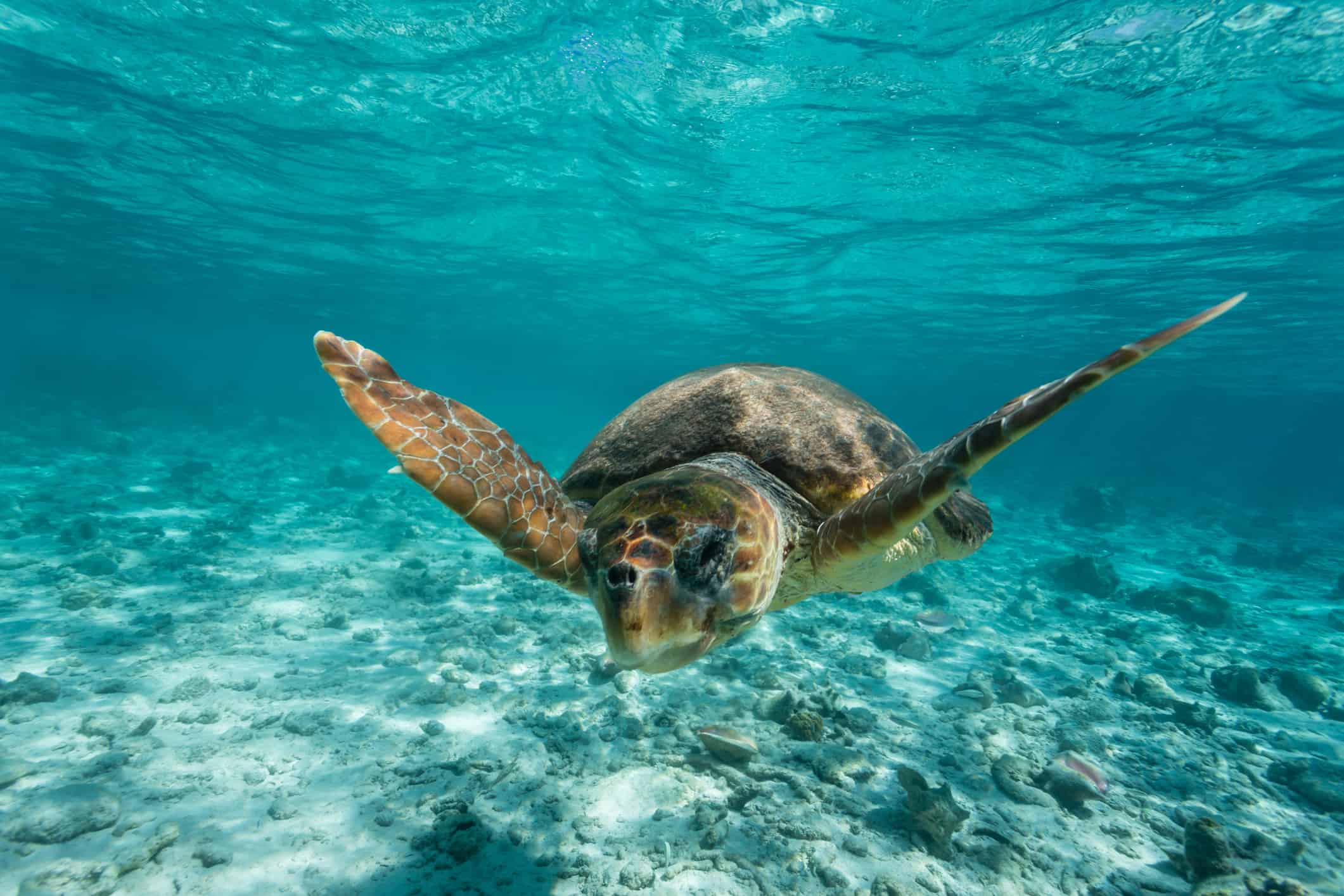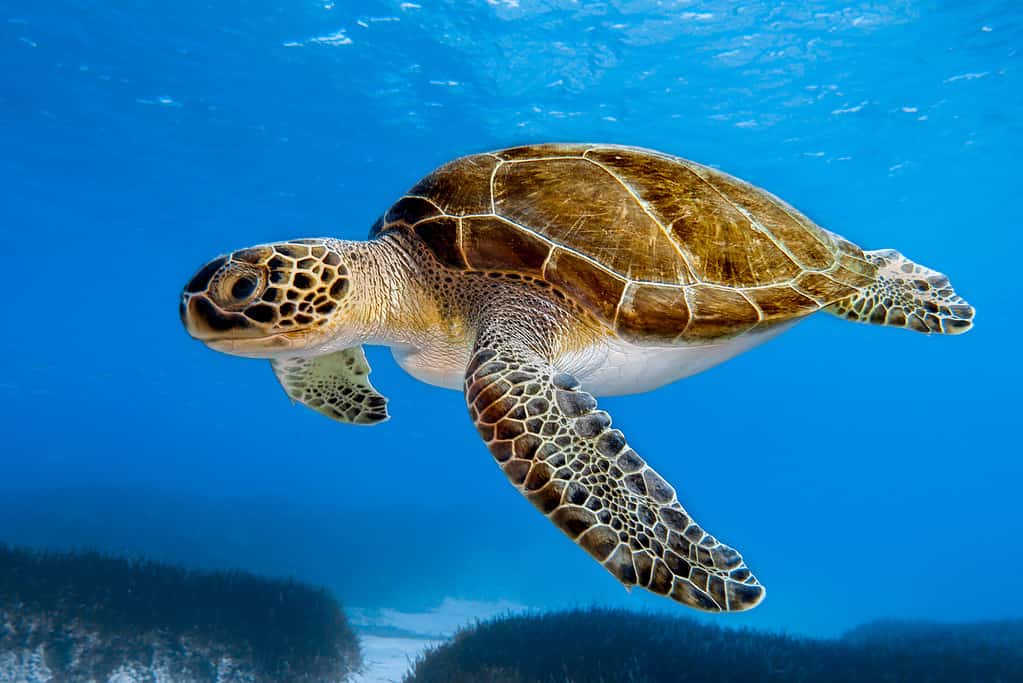Continue reading for our analysis...

According to the video on BBC Earth, 12 million tons of plastic end up in the ocean each year, killing likely half a million animals. However, this particular video shows a male Columbus crab clinging to a fishing net. Fully grown, this crab is looking to mate but is trapped due to its inability to swim. That is until the crab seemingly hitchhikes on the back of a loggerhead turtle, where it realizes it’s not alone.
A female Columbus crab is also catching a ride on the very same turtle, and the male immediately pursues her. They begin to mate on the back of the loggerhead turtle, hitchhiking as it glides through the water. This is now their home, and they return the favor to the turtle by grooming its shell.
What Is a Columbus Crab?
A Columbus crab is a species of pelagic crab. Columbus crabs live in the North Atlantic Ocean and are about the size of a fingernail (less than 10 mm). Also called planes minutus, these crabs come in various colors that match different backgrounds.
Many people believe the Columbus crab got its name from Christopher Columbus, who potentially made the first known claims of this crab during his first voyage to the New World. Apparently, Columbus saw these crabs as evidence of nearby land.

Many Columbus crabs will often hitchhike and even build a home on the back of a sea turtle, where they will mate with other crabs and groom the turtle’s shell.
©Sakis Lazarides/ via Getty Images
Are Columbus Crabs Hitchhikers?
Yes, Columbus crabs do hitchhike on sea turtles, as they are not good swimmers. In fact, their endurance is extremely low, and they often can’t swim for more than 30 minutes without reaching the point of exhaustion. That being said, they don’t make it too far when attempting to travel through the ocean.
As a result, they typically get around by drifting on weed, driftwood, buoys, timber, tarballs, and other floating materials. Additionally, the crab will often hitchhike by attaching to turtles, as seen in the video above. It’s also common for these little guys to mate on the back of turtles once they reach a mature adult state.
Thank you for reading! Have some feedback for us? Contact the AZ Animals editorial team.







